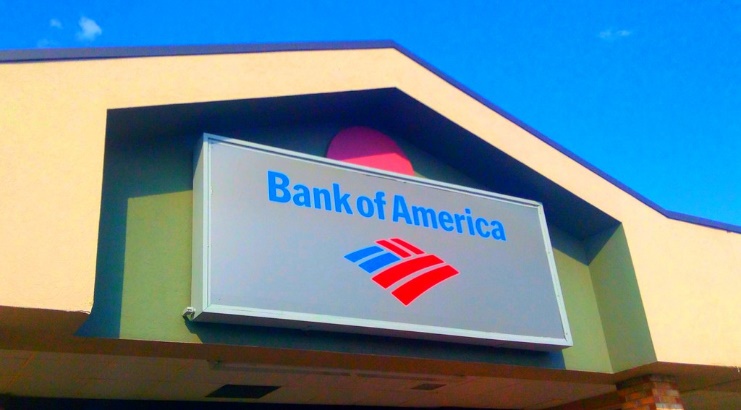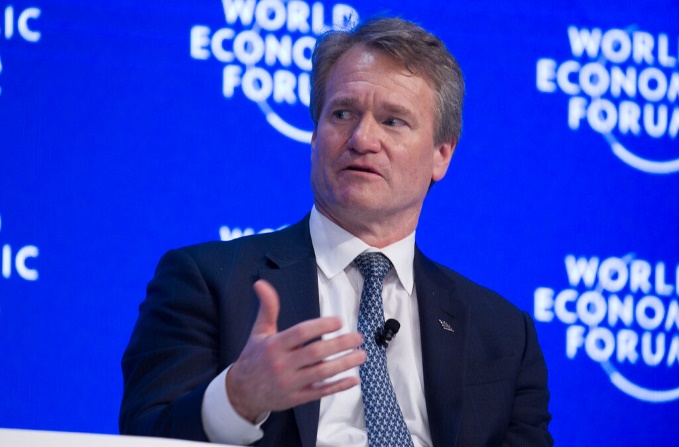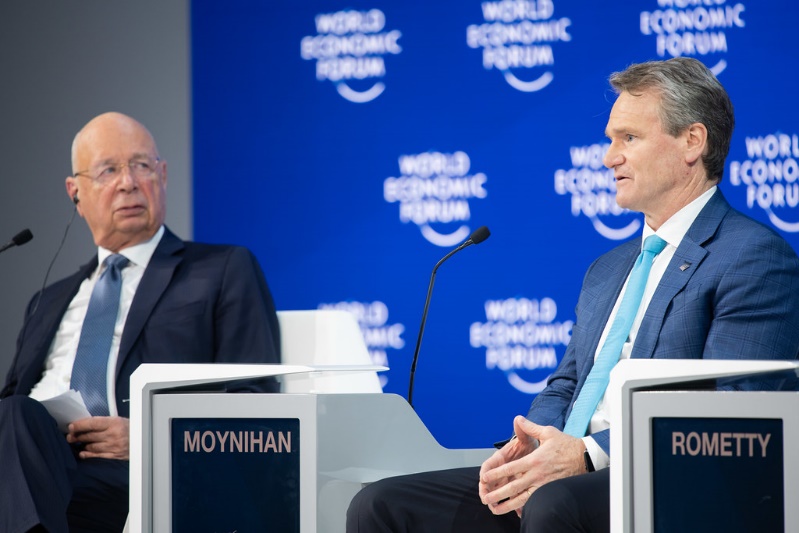United States Securities and Exchange Commission
Washington, D.C. 20549
NOTICE OF EXEMPT SOLICITATION
Pursuant to Rule 14a-103
Name of the Registrant: Bank of America Corporation
Name of persons relying on exemption: National Legal and Policy Center
Address of persons relying on exemption: 107 Park Washington Court, Falls Church, VA 22046
Written materials are submitted pursuant to Rule 14a-6(g) (1) promulgated under the Securities Exchange Act of 1934. Submission is not required of this filer under the terms of the Rule but is made voluntarily in the interest of public disclosure and consideration of these important issues.

PROXY MEMORANDUM
TO: Shareholders of Bank of America Corporation
RE: The case to vote FOR Shareholder Proposal No. 6 (“Independent board chair”) on the 2023 Proxy Ballot
This is not a solicitation of authority to vote your proxy. Please DO NOT send us your proxy card; National Legal and Policy Center is not able to vote your proxies, nor does this communication contemplate such an event. NLPC urges shareholders to vote for Proposal No. 6 following the instructions provided on management's proxy mailing.
The following information should not be construed as investment advice.
Photo credits appear at the end of the report.
National Legal and Policy Center (“NLPC”) urges shareholders to vote “FOR” Shareholder Proposal No. 6, requesting an independent board chair policy, on the 2023 Proxy Ballot for Bank of America Corporation (“Bank of America” or “Company”).
Summary
As has been long recognized under the American form of government, separation of powers and checks and balances are healthy practices. When it comes to leadership of public corporations,
1
which are owned by a broad ideological and economic spectrum of shareholders and patronized by a similarly diverse representation of customers, those practices also enhance accountability and self-examination. While not perfectly analogous to a representative republic form of democracy, the separation of responsibilities between a chief executive officer and a chair of the board enables each to focus on critical matters that fall under their respective purviews.
At the same time, one person occupying both the Chair and CEO roles infuses that leader with an inordinate amount of insufficiently-checked power. As we cite from the Council of Institutional Investors in our proposal’s supporting statement, “A CEO who also serves as chair can exert excessive influence on the board and its agenda, weakening the board’s oversight of management. Separating the chair and CEO positions reduces this conflict, and an independent chair provides the clearest separation of power between the CEO and the rest of the board.”
As the legendary late ITT Corporation CEO Harold Geneen wrote in his 1984 book Managing:1
If the board of directors is really there to represent the interests of the stockholders, what is the chief executive doing on the board? Doesn’t he have a conflict of interest? He’s the professional manager. He cannot represent the shareholders and impartially sit in judgment of himself.
And as two business law professors argued in the Harvard Business Review, “letting the CEO chair the board can compromise board discussion quality, weakening the corporation’s risk management ability.”2
The HBR co-authors, Joseph Mandato of Stanford University and William Devine of Menlo College, cite as examples “debacles” from recent years at Boeing, WeWork and Facebook (now Meta), in which they argue that a board of directors might be less willing to challenge a Chair and CEO, if both are the same person.
“A CEO feedback session whose import is underscored by having the CEO’s organizational equal—i.e., the board chair—conduct it is not possible, of course, when the board chair is the CEO,” the co-authors wrote. “This makes it harder to check a top exec steering the corporation astray.”
Bank of America’s Response to Our Proposal
Bank of America claims that the CEO and Board Chair role should continue to be consolidated based on the following rationale:
-The need for “flexibility” in the Board structure
-Existing independence and objectivity within the existing Board structure
-Adherence with industry standards
1 Geneen, Harold. Managing, Doubleday, January 1, 1984.
2 Mandato, Joseph and Devine, William. “Why the CEO Shouldn’t Also Be the Board Chair,” Harvard Business Review, March 4, 2020. See https://hbr.org/2020/03/why-the-ceo-shouldnt-also-be-the-board-chair.
2
The need for “flexibility” in Board structure
In their proxy statement of opposition, the Company board of directors cites the need for “flexibility” in its ability to design a leadership structure, characterizing our proposal as rigidly prescribing a “one-size-fits-all” policy that seeks a “singular, fixed leadership model.”
To that we plead: “Guilty as charged.” Flexibility should be viewed as a bug, not a feature.
|
| Looking at the United States government example, is our constitutional form of government too rigid and prescriptive? Or should elected (or even appointed) leaders have elastic rules to play by – like Bank of America’s – so the preferences of a few embedded elites can be accommodated, dependent on shifting priorities like personal relationships, politics, peer acceptance, Twitter favorability, and |
other irrelevant subjectivisms beyond fiduciary duties? | ||
Speaking of that, the Bank of America directors also argue that it is their “fiduciary duty” to “evaluate and review the Board’s leadership structure at least annually to determine what, if any, changes are appropriate based on the Board’s and company’s then-existing needs and circumstances.”3
This is nonsense. Returning to our U.S. government example, would national oversight by our elected leaders be better served if, say, Congress decided it would be best if the roles of Speaker of the House and the President of the United States were held by the same person – but at another random “given time,” decided it was not the best practice? Such determinations are more subject to flawed, personal human opinions than to what’s best for the “needs of the Board and the Company.” Shareholders depend on consistency in knowing the rules that leadership plays by.
Existing independence and objectivity within the existing Board structure
Bank of America claims that “it is the Board’s independence, experience, and judgment in exercising its fiduciary duties upon which shareholders rely to protect their interests.”4 The Company contends that shareholder interests are protected because of the Board’s independence, while failing to be led by a Board that is fully independent. We find this to be illogical and a testament to the untenable corporate governance practices of the company.
3 “Bank of America 2023 Proxy Statements,” Bank of America, March 7, 2023. See https://d1io3yog0oux5.cloudfront.net/_e9f167c6242a703f021113fe2ea6533c/bankofamerica/db/867/9840/proxy _statement/BAC+CSPDF+294559_001_Web_BMK1.pdf.
4 Ibid.
3
The Board also argues – like every other company with a similar governance structure – that separation of the Chair and CEO roles is not necessary, because the Company has “a strong Lead Independent Director” that is a “robust, well-defined, and transparent… role… that empowers the Lead Independent Director with extensive authority and responsibilities.” The “well-defined duties” of the role include:
-The ability to call meetings
-Planning, reviewing, and approving Board meeting agenda
-Chairing board meetings when the Chair/CEO is too busy managing the Company
-Providing feedback and acting as a liaison from the Board to the Chair/CEO
-Facilitating communications
-Being available for consultation and direct communication
-Advising the CEO of the information needs of our Board and approving information sent to our Board
In reality, rather than serving as a “strong” and “robust” Lead Independent Director, the role is clearly subservient to the powerful Chair/CEO embodied by Brian Moynihan. We are also perplexed that the lead director role is filled by Lionel Nowell III, who has no formal financial services experience.5 |
|
|
|
| |
There is also a significant financial conflict of interest for someone who acts as both CEO and Board Chair, as Mr. Moynihan does. |
| |
According to the Spencer Stuart Board Index, the average total compensation for a S&P 500 board member is over $300,000;6 as Chair of the board, it is likely that Mr. Moynihan receives additional compensation, as much as $585,000 more, for his position as Chairman.7 Despite perceived objectivity on the matter, being removed as Chairman of the Board could result in a reduction of Mr. Moynihan’s income by as much as $1 million, with his power within the Company decreasing even more. And considering the Board oversees CEO and senior management succession planning, it doesn’t give Mr. Moynihan much incentive to replace himself. If one considers the recent struggles in CEO succession by the iconic leaders at The Walt Disney Company and Starbucks Corporation, the situation at Bank of America should be even more concerning.8 | ||
5 “Management Team & Directors,” Bank of America, Accessed March 16, 2023. See https://investor.bankofamerica.com/corporate-governance/management-team-and-directors.
6 “2022 S&P 500 Compensation Snapshot,” Spencer Stuart, September 2022. See https://www.spencerstuart.com/research-and-insight/2022-sp-500-compensation-snapshot.
7 Ibid.
8 Randall, David. “’Boomerang CEOs’ don't always work out; Disney hopes this one bucks trend,” Reuters, Nov. 22, 2022. See https://www.reuters.com/business/media-telecom/boomerang-ceos-dont-always-work-out-disney-hopes-this-one-bucks-trend-2022-11-22/.
4
Bank of America has stated that their Board of Directors is composed of “diverse, experienced, and skilled Board members, all of whom are independent aside from the CEO.”9 This obvious exception decreases the independence and objectivity of the entire board and should be remedied so all Board members are independent.
Adherence to industry standards
Bank of America claims its Board structure is “consistent with the practice among S&P 500 companies” because “43 percent of the chairs of S&P 500 companies are also the current CEOs.”10 But the 2022 Spencer Stuart Board Index survey found that “57 percent of S&P 500 boards split the chair and CEO roles, compared with 59 percent (in 2021).”11 Despite the one-year decrease in this type of corporate structure, the longer view shows there has been a multi-year trend that shows a separation of the roles.
Bank of America notes that the previous shareholder votes in 2015, 2017, and 2018, which sought to separate the positions of CEO and Chair, represent shareholders’ current sentiment, but we disagree that this represents an overall trend.
The Spencer Stuart survey found that “a growing number of S&P 500 boards have separated the chair and CEO roles.”12 For reference, 43 percent of S&P 500 companies had separate CEOs and Board Chairs in 2012 versus 57 percent in 2022.13 So the longer trend shows an increased percentage of companies where the CEO and Chair positions are separated, during the period of Bank of America’s previous shareholder votes on the subject in 2015, 2017, and 2018.

The CFA Institute supports this sentiment, as they believe that “Good corporate governance not only protects the interests of investors and improves their trust in capital markets, but also acts as
9 “Bank of America 2023 Proxy Statements,” Bank of America, March 7, 2023. See https://d1io3yog0oux5.cloudfront.net/_e9f167c6242a703f021113fe2ea6533c/bankofamerica/db/867/9840 /proxy_statement/BAC+CSPDF+294559_001_Web_BMK1.pdf.
10 Ibid.
11 “2022 U.S. Spencer Stuart Board Index,” Spencer Stuart, October 2022. See https://www.spencerstuart.com/-/media/2022/october/ssbi2022/2022_us_spencerstuart_board_index_final.pdf.
12 Ibid.
13 Ibid.
5
a key driver of investment performance.”14 The CFA Institute as a whole “believes that the same person should not perform the roles of chair and CEO.”15
Based on these statistics, we believe Bank of America’s Board leadership structure is therefore not perfectly consistent with the leadership structure of its peers. In fact, among its selected peer group (Wells Fargo, JP Morgan, Goldman Sachs, Morgan Stanley, and Citigroup), both Wells Fargo and Citigroup have separated the positions of CEO and Chair. A number of other financial institutions also have separate Board Chairs and CEOs, such as: BNY Mellon, Invesco, T. Rowe Price, Synchrony Financial, Charles Schwab, Discover, Regions, and Signature Bank.16
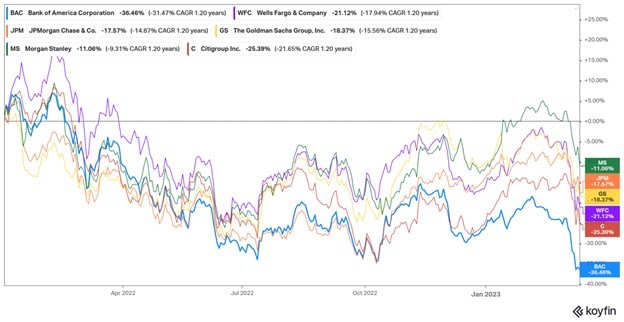
Helping Mr. Moynihan to ‘Execute’?
When it comes to leadership structure, the concentration of power in a one-person Chair/CEO redounds little, if any, innate benefit to a Company and its shareholders, that a separated Chair and CEO structure could not also accomplish. On the other hand, Chair and CEO responsibilities are more likely to dilute the effectiveness and fulfillment of each role if both are held by one person.
In the Boeing example cited by Mandato and Devine, the co-authors cite former Chair/CEO Dennis Muilenburg’s three-year tenure, during which the company successfully lobbied to ease government oversight of new airplane designs.17 A subsequent series of events “is suspected to
14 “CFA Institute pushes for more independence and diversity on company boards,” CFA Institute, September 14, 2021. See https://www.cfainstitute.org/en/about/press-releases/2021/independent-directors-in-Asia-Pacific.
15 Ibid.
16 “2022 U.S. Spencer Stuart Board Index,” Spencer Stuart, October 2022. See https://www.spencerstuart.com/-/media/2022/october/ssbi2022/2022_us_spencerstuart_board_index_final.pdf.
17 Ibid.
6
have led to two plane crashes and the tragic loss of 346 lives, the grounding of almost 500 planes worldwide, and company losses that will exceed $18 billion” (as of March 2020).
The two professors noted that during Mr. Muilenburg’s reign, he sought to remake the company as a “global industrial champion,” who debated openly with SpaceX founder/CEO Elon Musk over whose rocket would carry the first person to Mars. Meanwhile, he allegedly fostered an employee culture that disrespected and mocked regulators, among whom the twice-crashed 737 MAX was referred to as “a joke.”
“Boeing might have benefitted from a board chair initiating a closed executive session that considered Mr. Muilenburg’s fixation on global and interplanetary aspirations,” Mandato and Devine wrote. “Perhaps those aspirations could have been identified as what they turned out to be: signals that the corporation’s priorities had veered dangerously out of alignment.”
Even now Boeing is trying to recover from the disastrous 737 MAX “cascade of errors, shortcuts and management failures”18 that marked the Muilenburg era – but is still losing ground to rival Airbus.19
The last CEO to act as Chairman of the Board for Bank of America was Ken Lewis. Shareholders voted to remove Mr. Lewis as chair because of the acquisition of Merrill Lynch at the peak of the financial crisis, as well as his support of significant compensation bonuses prior to the deal closing, despite Bank of America realizing a loss of over $15 billion.20 It was reported in 2012 that Bank of America withheld information from shareholders regarding the financial health of Merrill Lynch. The bank agreed to pay $2.43 billion to settle those claims.21
Presently with Bank of America, the Board argues in its opposition to our proposal that the combined Chair/CEO arrangement has allowed Mr. Moynihan to “effectively manage the business” and to “execute on our strategic priorities.” But the Board does not specify what constitutes the “business” or “strategic priorities” that could not have been managed and executed by a separate Chair and CEO.
Questioning Mr. Moynihan’s Leadership as Chairman and CEO
Involvement with “woke” business activities
-Mr. Moynihan has committed a significant amount of financial capital to “woke” business activities that do not directly support the operations of the company. His financial commitments and investments include:
18 Cohn, Scott. “One year after the 737 Max’s return, Boeing is still trying to get back on course,” CNBC, Jan. 24, 2022. See https://www.cnbc.com/2022/01/24/the-737-max-may-be-back-but-boeing-is-still-trying-to-get-back-on-course.html.
19 Jolly, Jasper. “Boeing 737 Max disaster casts long shadow as planemaker tries to rebuild fortunes,” The Guardian, June 25, 2022. See https://www.theguardian.com/business/2022/jun/25/max-disaster-casts-long-shadow-as-boeing-tries-to-rebuild-its-fortunes.
20 “Bank of America names CEO Moynihan chairman of board,” CNBC, October 2, 2014. See https://www.cnbc.com/2014/10/02/bank-of-america-names-ceo-moynihan-chairman-of-board.html.
21 Ibid.
7
oA $1.5 trillion commitment to the Company’s 2030 sustainable finance target, of which $410 billion has already been deployed
oA $421 million commitment to over 130 equity funds that provide capital exclusively to non-white and female entrepreneurs and small business owners
oIssued $2 billion that will be used to promote the United Nations Sustainable Development Goals; The Company has issued $14 billion of these bonds in aggregate
oCreating a discriminatory program that reduces interest rates for commercial borrowers that hit certain diversity quotas 22
oZero-down payment, zero-closing cost mortgage advances for first-time home buyers only in black/African-American and Hispanic communities, without typically required home insurance or a credit score
| -As part of his efforts to “demonstrate leadership in the financial services industry and among other CEO forums,” Mr. Moynihan has continued his involvement with the World Economic Forum’s International Business Council. He is creating a set of universal metrics related to ESG issues with the help of the Big Four accounting firms to develop a “baseline set of metrics.”23 This initiative, along with other efforts by |
the World Economic Forum, will attempt to force corporations to comply with certain standards and conditions that meet their own agendas. | |
-As part of Mr. Moynihan’s effort to increase Bank of America’s involvement in ESG initiatives, he placed the Company in the Net Zero Banking Alliance. NZBA’s goal of eliminating the use of fossil fuels and reducing emissions of greenhouse gases are “based on analytical methods that violate fundamental tenets of the scientific method.”24 With rising criticism surrounding “greenwashing” and other initiatives in the name of ESG, perhaps the Board should evaluate Mr. Moynihan’s adherence towards ESG and “sustainability.” His outspoken bias against those who don’t support ESG, particularly those in the gas and oil sector, clearly hurts financial performance. He implied in an
22 November 7, 2022. “How business giants get lower interest rates for meeting diversity quotas”, Washington Free Beacon, November 7, 2022. See https://freebeacon.com/latest-news/how-business-giants-get-lower-interest-rates-for-meeting-diversity-quotas/.
23 Lacina, Linda. “Bank of America’s Brian Moynihan: finding better measures of success,” World Economic Forum, October 21, 2020. https://www.weforum.org/agenda/2020/10/bank-of-america-ceo-brian-moynihan-leaders-esg-metrics/.
24 Rotter, Charles. “Challenging net zero with science: Lindzen-Happer-CO2 coalition paper released,” Watts Up With That? February 23, 2023. See https://wattsupwiththat.com/2023/02/27/challenging-net-zero-with-science-lindzen-happer-co2-coalition-paper-released/ .
8
interview with CNBC that if a business client or vendor is not compliant with a company’s ESG standards, then “we shouldn’t do business with you.”25
-Mr. Moynihan’s ESG efforts don’t stop there, as he is also actively involved and committed to the United Nations Sustainable Development Goals (“SDG”). Mr. Moynihan stated, “To solve these huge problems that the world faces – this is U.N. week and the SDGs are the statement to the world of what we’d like to make progress on – you have to bring capitalism to the task”26 – problems that will, according to Al Gore, cost $4.5 trillion per year.27 Mr. Moynihan also distorts the purpose and meaning of capitalism, stating that ESG standards are critical to “align capitalism with what society wants from it.” His ignorance of what capitalism, by definition, inherently does – which is to deliver “what society wants from it” – is deeply disturbing and should concern the Company board. Additionally, it is not the responsibility of CEOs to address these social topics, so many of which fall under ESG. As Aswath Damodaran, a finance professor at New York University, states, “Do you really want Larry Fink and Jamie Dimon deciding what’s good or bad for the world? You’ve outsourced what should be your responsibility as a voter, as a citizen, to CEOs of companies. Nothing good has ever come of doing that.”28
-Following the January 2021 Capitol disturbance, Bank of America handed over 211 of its clients’ financial data to federal agents, despite it not being “a good reason to hand over private information.”29 Former New York Police Department police officers claimed that many individuals were profiled because they went to an ATM in Washington at the time of the riot, despite the department “always having” a specific suspect in mind when it sought (financial) data.”30 This was an overreach that breached consumer trust, and individuals responded by boycotting the company, likely causing Bank of America reputational damage.
Lack of an independent chair has resulted in failure to develop and execute effective risk-management practice and investment strategies, resulting in underperformance
Executive leadership assesses and proposes risk appetite and capacity, formally articulated in the Risk Appetite Statement, and is approved by the board of directors. The board ensures adherence to risk appetite limits and oversees senior management’s implementation of said risk appetite, while also overseeing execution of other corporate strategies. This is a direct conflict of interest
25 Wef, Davos. “Bank of America CEO says new ESG rules are needed to reboot capitalism,” CNBC, January 18, 2023. See https://www.cnbc.com/2023/01/18/bank-of-america-ceo-says-capitalism-needs-cleaning-up-with-new-global-esg-rules.html.
26 Stocklin, Kevin. “ESG: The merger of state and corporate power,” The Epoch Times, November 13, 2022. https://www.theepochtimes.com/esg-the-merger-of-state-and-corporate-power_4858981.html.
27 Ibid.
28 Ibid.
29 Vincent, Isabel. “Security experts blast Bank of America for helping feds in Capital riot probe,” New York Post, February 6, 2021. See https://nypost.com/2021/02/06/bank-of-america-under-fire-for-helping-feds-in-capitol-riot-probe/.
30 Ibid.
9
for Mr. Moynihan, as he is both the overseer and executor of firm-wide risk appetite and corporate strategy.
Bank of America’s financial risk policies are designed around Basel III, an organization that sets international standards for bank capital adequacy, stress testing, and liquidity requirements, applicable to all financial institutions with more than $50 billion in assets;31 Basel III requires financial institutions to have certain levels of capital. For the sake of brevity, we have decided to evaluate Bank of America’s common equity tier 1 (CET1) capital and Tier 1 capital, risk-weighted assets, and held-to-maturity (“HTM”) portfolio.
CET1 and Tier 1 capital
CET1 capital is a bank’s common equity as a percent of the bank’s risk-weighted assets, calculated as the sum of a 4.5 percent minimum, the Company’s global systematically important bank (G-SIB) surcharge, and the Company’s capital conservation buffer of 2.5 percent or the stress capital buffer, as applicable.32 33 Bank of America’s required CET1 capital ratio requirement is 10.4 percent for 10/1/2022 to 9/30/2023, with the company reporting a ratio of 11.2 percent in its most recent financial report.34 With an expected G-SIB increase of 2.5 percent to 3 percent occurring in the beginning of 2024, making the updated CET1 capital ratio 10.9 percent, Bank of America will only have a 0.3 percent buffer on their CET1 capital ratio.
Tier 1 capital is the “core capital held in a bank’s reserves and is used to fund business activities for the bank’s clients.” The ratio takes into account the common equity of bank, as well as disclosed reserves, such as certain preferred stock investments and qualifying minority interests.35 Bank of America’s Tier 1 risk-based capital was 13 percent at year-end, versus a required ratio of 11.9 percent.
In relation to Silicon Valley Bank (“SVB”), which recently faced a severe run that forced the closure of the bank, Bank of America’s primary capital is less. For reference, SVB’s CET1 capital ratio was 12.05 percent versus a required ratio of 7 percent, while SVB’s tier 1 risk-based capital was 15.4 percent versus a required ratio of 8.5 percent. Both of these ratios are materially higher than Bank of |
|
|
31 “Capital requirements and liquidity requirements,” CFA institute, May 24, 2021. See https://www.cfainstitute.org/en/advocacy/issues/capital-liquidity-requirements#sort=%40pubbrowsedate%20descending.
32 “Basel III: An essential guide,” Delphix, accessed March 16, 2023. See https://www.delphix.com/glossary/basel-iii.
33 “Large Bank Capital Requirements,” The Federal Reserve, August 2022. See https://www.federalreserve.gov/publications/files/large-bank-capital-requirements-20220804.pdf.
34 “Bank of America 10-K Annual Report”, SEC, February 2, 2023. See https://www.sec.gov/edgar/browse/?CIK=70858&owner=exclude.
35 Grant, Mitchell. “Tier 1 Capital: definition, components, ratio, and how it’s used,” Investopedia, March 13, 2023. See https://www.investopedia.com/terms/t/tier1capital.asp.
10
America’s in terms of both the absolute amount and the buffer relative to their regulatory requirements. Despite having ratios that are acceptable to regulators, having a low CET1 ratio suggests an insufficient level of Tier 1 capital, meaning “a bank may not be able to absorb a financial shock and may need to be bailed out quickly in the event of a financial crisis.”36
While we acknowledge that SVB suffered from idiosyncratic risks related to their customer concentration, unhedged interest rate positions, and other poor risk management practices, we want to emphasize how quickly a bank’s risk management practices can deteriorate, despite perceived safety and their touting as being one of America’s Best Banks. This is supported by SVB’s ample capital adequacy ratios.37 This makes independent evaluation of Bank of America’s risk management practices all the more critical, especially considering the bank’s marginal buffer for its capital adequacy ratios and the possibility for further turmoil within the banking system.

*The capital requirements imposed on Silicon Valley Bank and its parent, SVB Financial Group, in accordance with Basel III*
Risk-weighted assets
Shortly after the Great Recession, McKinsey published an article on banks’ capital adequacy relative to the probability of their failure. The writers found that tangible common equity (“TCE”) to risk-weighted assets (“RWA”) was the strongest predictor of bank distress during the credit and liquidity crisis of 2007 to 2009.38 Bank of America has $174.6 million in tangible common equity relative to $1.6 trillion of RWAs; This produces a ratio of 10.9 percent, relative to an average ratio of 11.7 percent during 2017-2020.39 The researchers found that once the ratio falls below 10 percent, the probability of default increases significantly.40
36 Grant, Mitchell. “Common equity tier 1 (CET1) definition and calculation,” Investopedia, April 7, 2022. See https://www.investopedia.com/terms/c/common-equity-tier-1-cet1.asp.
37 Steigrad, Alexandra. “SVB touted by Forbes on 2023 America’s best banks list last month,” New York Post, March 14, 2023. See https://nypost.com/2023/03/14/forbes-touted-svb-on-its-americas-best-banks-list-for-2023-before-collapse/.
38 Ibid.
39 “Bank of America 10-K Annual Report”, SEC, February 2, 2023. See https://www.sec.gov/edgar/browse/?CIK=70858&owner=exclude.
40 Ibid.
11
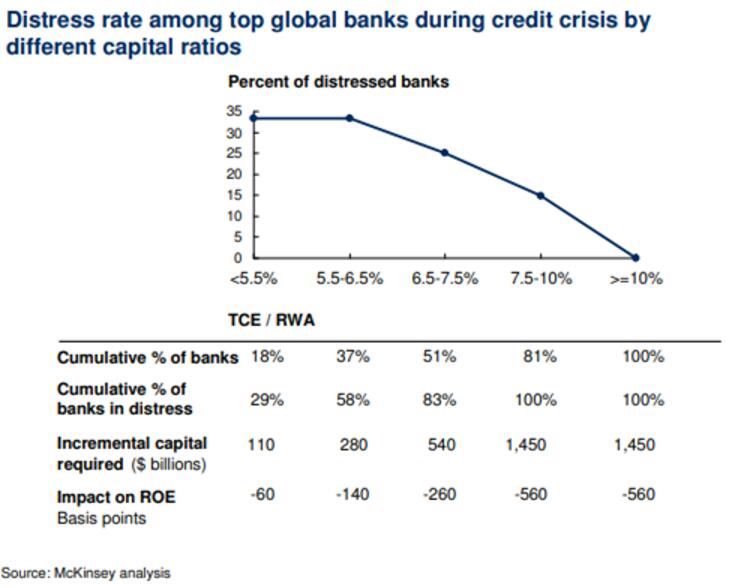
This, however, is an incomplete picture of the risk Bank of America faces, as many of its assets are not risk-weighted. Treasuries, government-backed mortgage debt, and other “direct unconditionally guaranteed obligations of U.S.” are not included in a bank’s RWA, despite carrying significant amounts of interest rate risk.41 Calculating the TCE with tangible assets of $3.0 trillion as the denominator, computes a ratio of 5.6 percent relative to an average of 7.3 percent from 2017-2020.42 Put differently, $5.60 of equity is propping up $100 of assets. For reference, Bank of America’s ratio of TCE to tangible assets fell to two percent during the Great Recession.43
41 “Risk weights at a glance with comparison to FDIC,” National Credit Union Administration, April 14, 2022. See https://ncua.gov/regulation-supervision/regulatory-compliance-resources/risk-based-capital-rule-resources/risk-weights-glance-comparison-fdic.
42 “Bank of America 10-K Annual Report”, SEC, February 2, 2023. See https://www.sec.gov/edgar/browse/?CIK=70858&owner=exclude.
43 Bank capital: tangible common equity vs. wishful thinking ratios,” Forbes, March 10, 2012. See https://www.forbes.com/sites/ycharts/2012/03/10/bank-capital-tangible-common-equity-vs-wishful-thinking-ratios/?sh=66f69eee18e7.
12
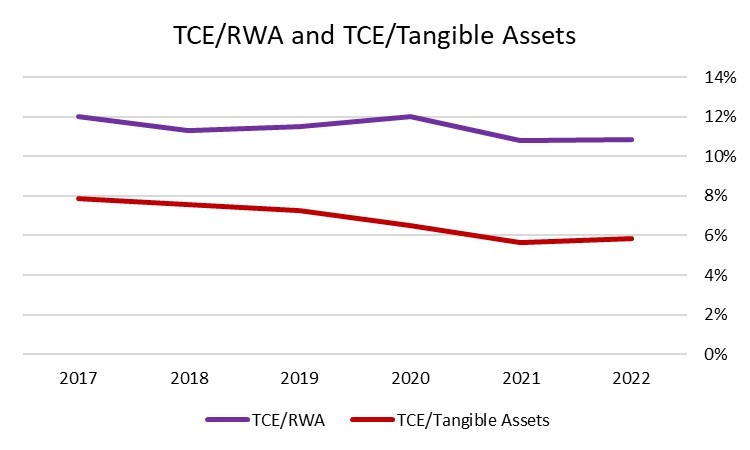
Given the gradual deterioration of this ratio, as well as the growing systematic risk to the banking system and Bank of America’s recent backstopping of First Republic Bank, we find the gradual deterioration of Bank of America’s creditworthiness to be a cause for concern.
Held-to-maturity portfolio
Of Bank of America’s preferred peer group, their held-to-maturity (“HTM”) portfolio has exhibited the highest risk and generated the most losses, which is a result of poor risk-management practices exhibited by the board of directors.
Bank of America’s HTM portfolio represents 20.7 percent of the Company’s total assets and has suffered a loss of 17.2 percent relative to its amortized cost. The loss is 44.5 percent of common equity.44
The bank doubled the size of its HTM assets in 2020,45 increasing it by over 50 percent in 2021.46 This purchasing spree resulted in an average yield of two percent, with over 80 percent of the securities maturing in over 10 years, giving the Company significant exposure to interest rates. Bank of America’s peer group has average yields of 2.3 percent and less than half of their HTM securities mature in over 10 years.47 Bank of America’s exposure to mortgage-backed securities (“MBS”) is also significantly higher than that of its peer group (second chart next page48).
44 “Bank of America 10-K Annual Report”, SEC, February 2, 2023. See https://www.sec.gov/edgar/browse/?CIK=70858&owner=exclude.
45 Migliorato, Lorenzo. “BofA doubled held-to-maturity book in 2020,” Risk.net, January 19, 2021. See https://www.risk.net/risk-quantum/banks/7735431/bofa-doubled-held-to-maturity-book-in-2020.
46 “Bank of America 10-K Annual Report”, SEC, February 2, 2023. See https://www.sec.gov/edgar/browse/?CIK=70858&owner=exclude.
47 Ibid.
48 Ibid.
13

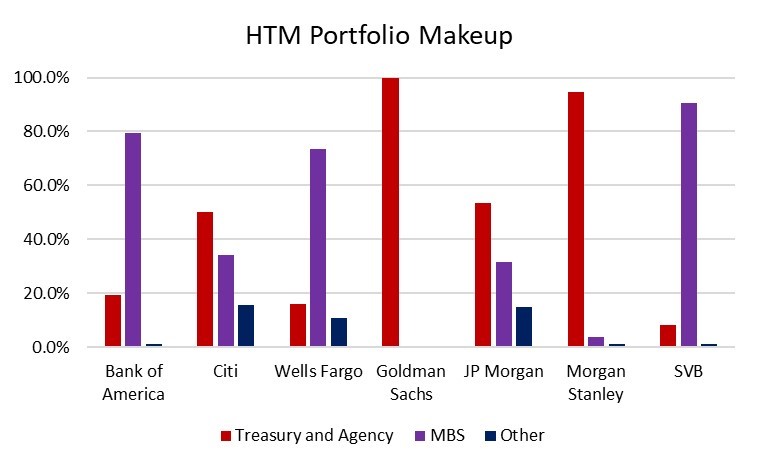
While the bank has enough available-for-sale securities to sufficiently cover customer withdrawals should panic ensue, Bank of America’s aggressive strategy of buying debt at low yields and long durations set the bank up for significant losses. This was an inappropriate strategy and is a key reason why the firm has underperformed its peers. These inappropriate business actions were influenced by Mr. Moynihan’s position as both overseer and executor of this strategy.
Conclusion
As these several examples show, the Company has made multiple missteps and poor judgments under Mr. Moynihan that the “strong” and “robust” Lead Independent Director – and the Board overall – failed to mitigate or prevent. A separate chair, with an outside perspective and more innate powers both in definition and in status, has more implied authority to help avoid such risks.
These all present a strong case for permanently changing Bank of America’s structural policy to require an independent chair.
14
Bank of America’s proxy statement provides the best rationale for why we believe an independent Board Chair is appropriate:
Our Board is committed to strong, independent Board leadership and views the provision of independent and objective oversight as central to effective Board governance and to acting in the best interests of the company and our shareholders.49
We agree, and encourage the Board to set up effective corporate governance practices in accordance with the members’ stated belief, starting with separating the positions of CEO and Board Chair.
Therefore, National Legal and Policy Center urges shareholders to vote “FOR” Shareholder Proposal No. 6, “Independent board chair,” on the 2023 Proxy Ballot for Bank of America Corporation.
Photo credits:
Page 3 – Bank of America branch, JeepersMedia/Creative Commons
Page 4 – Brian Moynihan, World Economic Forum/Creative Commons
Page 8 – Klaus Schwab & Brian Moynihan, World Economic Forum/Creative Commons
Page 10 – Silicon Valley Bank on the Web, Alpha_photo/Creative Commons
THE FOREGOING INFORMATION MAY BE DISSEMINATED TO SHAREHOLDERS VIA TELEPHONE, U.S. MAIL, E-MAIL, CERTAIN WEBSITES AND CERTAIN SOCIAL MEDIA VENUES, AND SHOULD NOT BE CONSTRUED AS INVESTMENT ADVICE OR AS A SOLICITATION OF AUTHORITY TO VOTE YOUR PROXY.
THE COST OF DISSEMINATING THE FOREGOING INFORMATION TO SHAREHOLDERS IS BEING BORNE ENTIRELY BY THE FILERS.
THE INFORMATION CONTAINED HEREIN HAS BEEN PREPARED FROM SOURCES BELIEVED RELIABLE BUT IS NOT GUARANTEED BY US AS TO ITS TIMELINESS OR ACCURACY, AND IS NOT A COMPLETE SUMMARY OR STATEMENT OF ALL AVAILABLE DATA. THIS PIECE IS FOR INFORMATIONAL PURPOSES AND SHOULD NOT BE CONSTRUED AS A RESEARCH REPORT.
PROXY CARDS WILL NOT BE ACCEPTED BY US. PLEASE DO NOT SEND YOUR PROXY TO US. TO VOTE YOUR PROXY, PLEASE FOLLOW THE INSTRUCTIONS ON YOUR PROXY CARD.
For questions regarding Bank of America Corporation, Proposal #6, “Independent board chair,” supported by National Legal and Policy Center, please contact Paul Chesser, director of NLPC’s Corporate Integrity Project, via email at pchesser@nlpc.org.
49 “Bank of America 2023 Proxy Statements,” Bank of America, March 7, 2023. See https://d1io3yog0oux5.cloudfront.net/_e9f167c6242a703f021113fe2ea6533c/bankofamerica/db/867/9840/ proxy_statement/BAC+CSPDF+294559_001_Web_BMK1.pdf.
15
